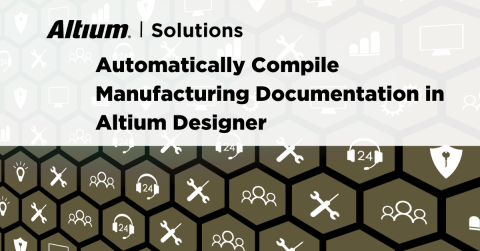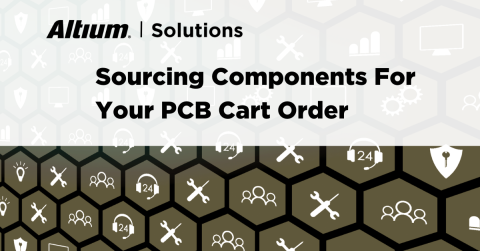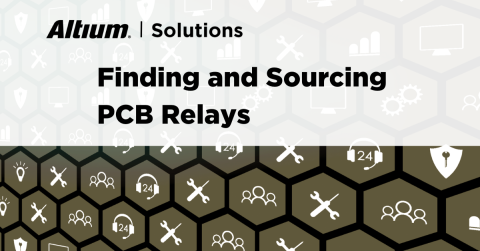How to Compare PCB Manufacturing Services for Your Board

When you run a design firm, there’s one type of email you’re bound to receive more than any other: sales emails from PCB manufacturing services. I understand that companies need to get their names out there and want to win business, so this post isn’t meant to denigrate those companies. There is plenty of PCBA for manufacturing services you can find online, and they can all start to blend together. If you’re searching for a new service provider, it can be hard to compare all of them and find the best manufacturer that meets your needs.
Some companies will spam you with offers like “2 to 48 layer HDI RF metal core PCB” compare to something similarly absurd. While experienced designers can spot bogus manufacturers from afar, there is always a temptation to go with the lowest-priced, the supposedly fastest overseas company you can find. However, there is a lot more that should go into choosing a PCB manufacturing service than just price.
How to Choose Your PCB Manufacturing Service
When you’re looking at engaging with a PCBA manufacturing service, you’ll find a lot of information on their website to use for comparison. There is a lot of overlap between different services in terms of price and lead times, but there are multiple metrics you should use to compare different services.
To start, look at the manufacturer’s capability limits. Most manufacturers are pretty competitive in this area and can reliably fabricate down to something like 4 mil traces, 8 mil vias, and a few mil spacing on standard stack-ups. After you’ve verified your board matches their capabilities, there are other metrics you should use for comparison:
Price vs. Lead Time
Price and lead time tend to follow an inverse relationship: one goes up while the other goes down. If your board house offers flexible lead time options, you can offset some of the fabrication costs by extending your lead time. This applies to both fabrication and assembly. Similarly, if you need your boards turned overnight, you’ll have to pay extra for them. Make sure your PCB manufacturing service can accommodate your lead time targets within your budget.
One thing I did not account for in my first manufacturing run was the shipping time required to move from fabrication to assembly, and to deliver the finished PCBA to me. Also, I did not account for the time required to ship components to the manufacturer, which delayed the start of PCB assembly. Make sure you account for these other aspects of the PCB manufacturing process so you don’t get surprised by any delivery delays.
Fabrication, Assembly, or Both?
Some manufacturers will provide fabrication and assembly in-house, while some will outsource assembly to a partner. Keep this in mind because you may need to have your fabricated boards and your components sent over to an assembler, assuming you won’t do the assembly yourself. Some PCBA for manufacturing services will offer a turnkey service, where they handle everything related to your production run and you don’t have to worry about much else. This is good for designers who may not be familiar with the procurement and consignment process or have time to manage procurement.
Inspections and Testing
It’s a good idea to have your board put through in-circuit testing during manufacturing to check for opens, shorts, and power. The boarding house will compare their measurements with your netlist to identify any mismatch, which could indicate a fabrication error. In addition to some basic electrical tests, the board should undergo some level of inspection. Boards will generally go through manual inspection or automated optical inspection (AOI), but a more complex board or something with dense components (like a fine-pitch BGA) should undergo X-ray inspection to ensure quality.

Production-Line Flashing
This is more for the embedded developer who wants to eventually produce at high volume, but it’s still something to consider. Some PCB manufacturing services will offer production-line firmware flashing services, where your code is flashed into memory before the boards are sent out to you. This is not something you’ll need to do during PCB prototyping, but you would need to consider it if you take your prototype into high-volume manufacturing.
Plating and Copper Weight Options
Look at any PCB manufacturing service website, and they all offer just about the same specifications on copper: 0.5 or 1 oz./sq. ft. copper with ENIG plating on the outer layers, and 1 oz./sq. Ft. copper on inner layers or planes. If you need different copper weights and/or plating, make sure to check on your fabricator’s capabilities and stack-up options.
Available Materials and Stackups
I’ve put this last because it’s almost always the last thing new designers think of when planning a production run for a board. Instead, the very first thing you should do before designing your board is creating a proposed stack up and then check with a fabricator to make sure they can produce something at or close to those specifications. You can send a screenshot of your proposed stack-up to the fabricator, and they can confirm whether their material stocks can match those requirements, or they can propose an alternative stack-up.

Make sure to let your fabricator know if you have an impedance requirement (usually 50 Ohms single-ended). If you’ve made a mistake when calculating the stack-up and trace width, a good fabricator will tell you the correct stack-up that they can produce. Remember, if it can’t be manufactured, then you might as well not even design it.
The Takeaway: Talk to Your PCB Fabricator First
From the above list, there are many dimensions you’ll need to think about to compare PCB manufacturers. It doesn’t hurt to talk to your fabricator early to get an idea of their capabilities to ensure your run is successful and meets your expectations.
When you need to access an easy-to-use PCB layout tool that includes everything needed to build high-quality manufacturable circuit boards, look no further than CircuitMaker. When you’re planning your next manufacturing run, you can instantly generate the output files needed to put your board into production with a PCB manufacturing service. All CircuitMaker users also have access to a personal workspace on the Altium 365 platform. You can upload and store your design data in the cloud, and you can easily view your projects via your web browser in a secure platform.
Start using CircuitMaker today and stay tuned for the new CircuitMaker Pro from Altium.









